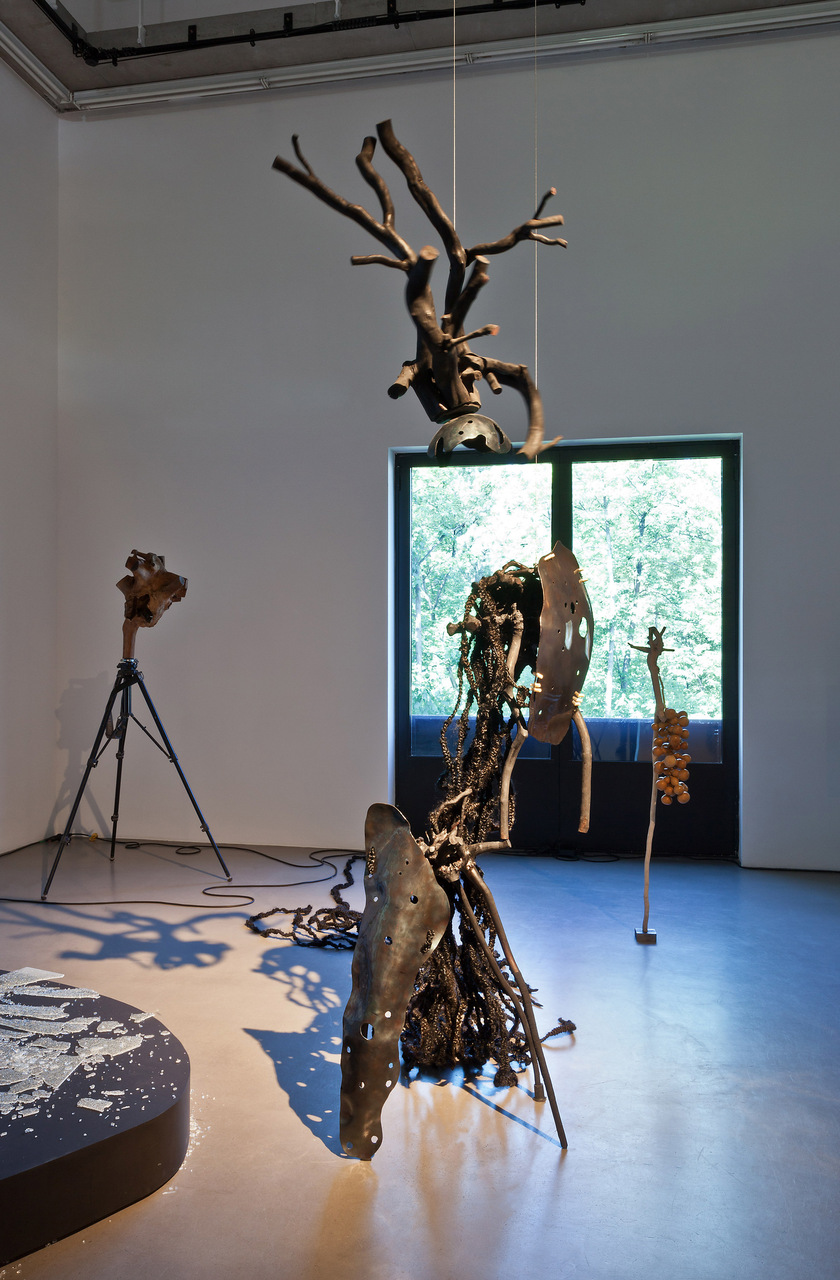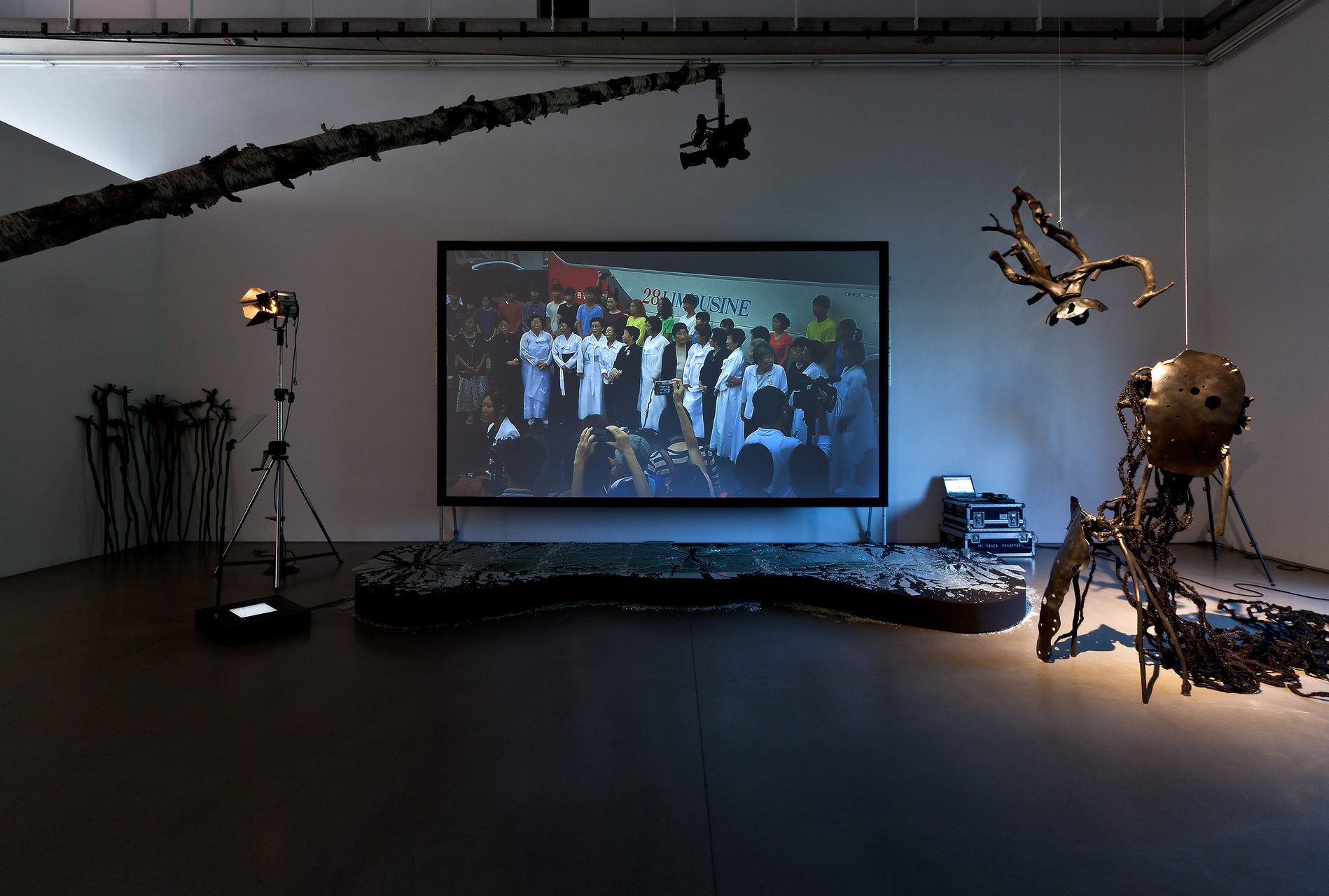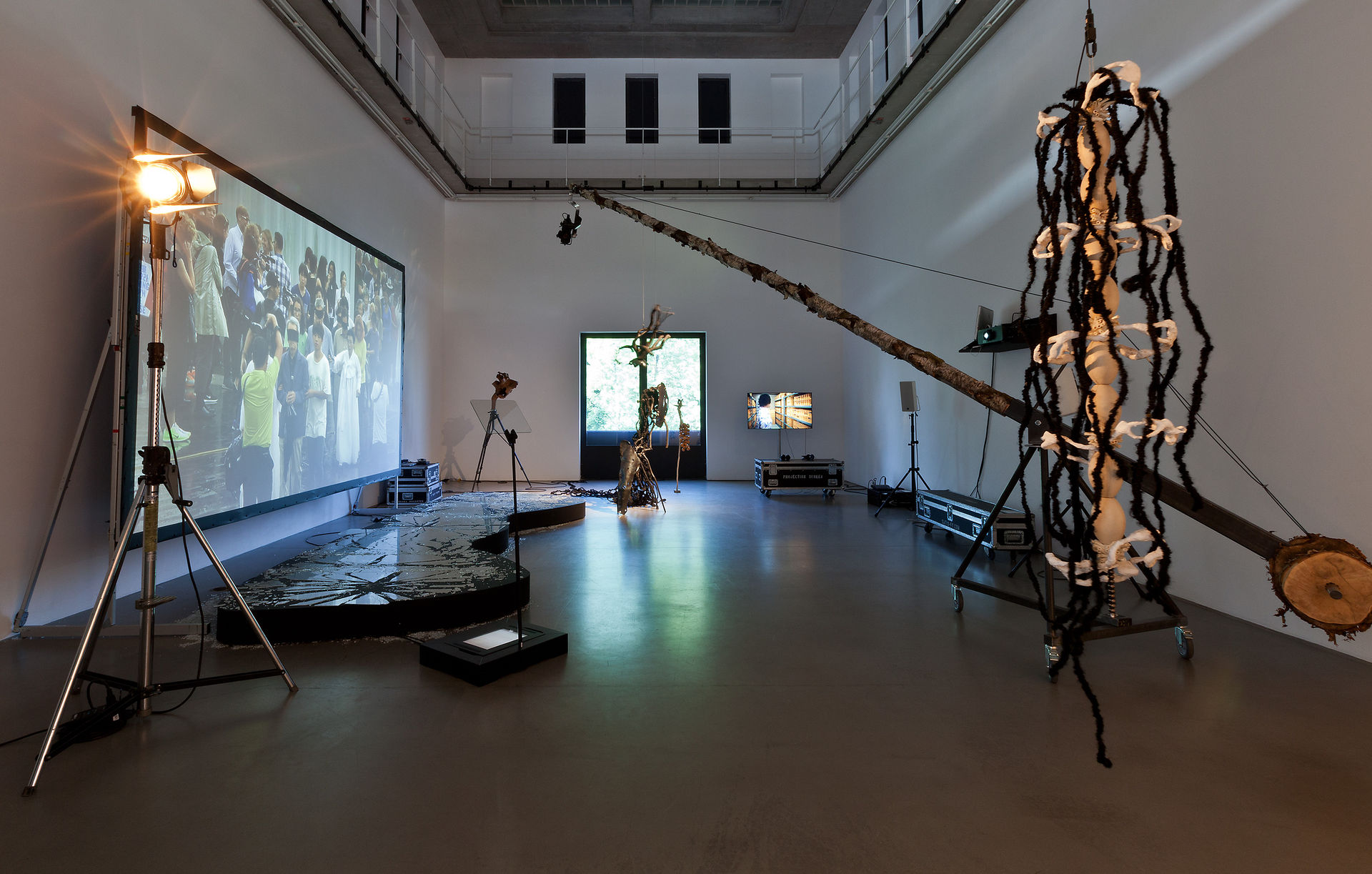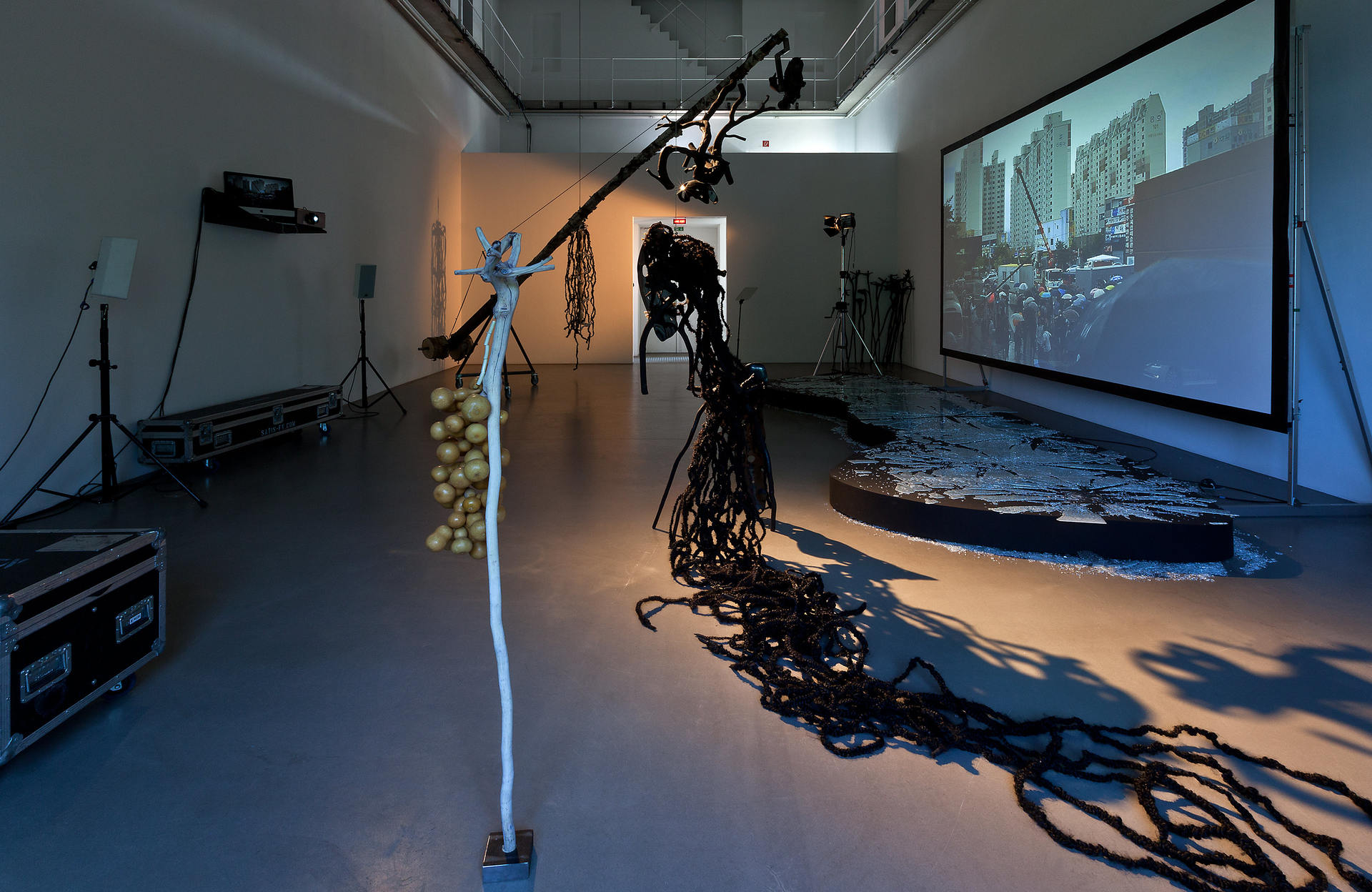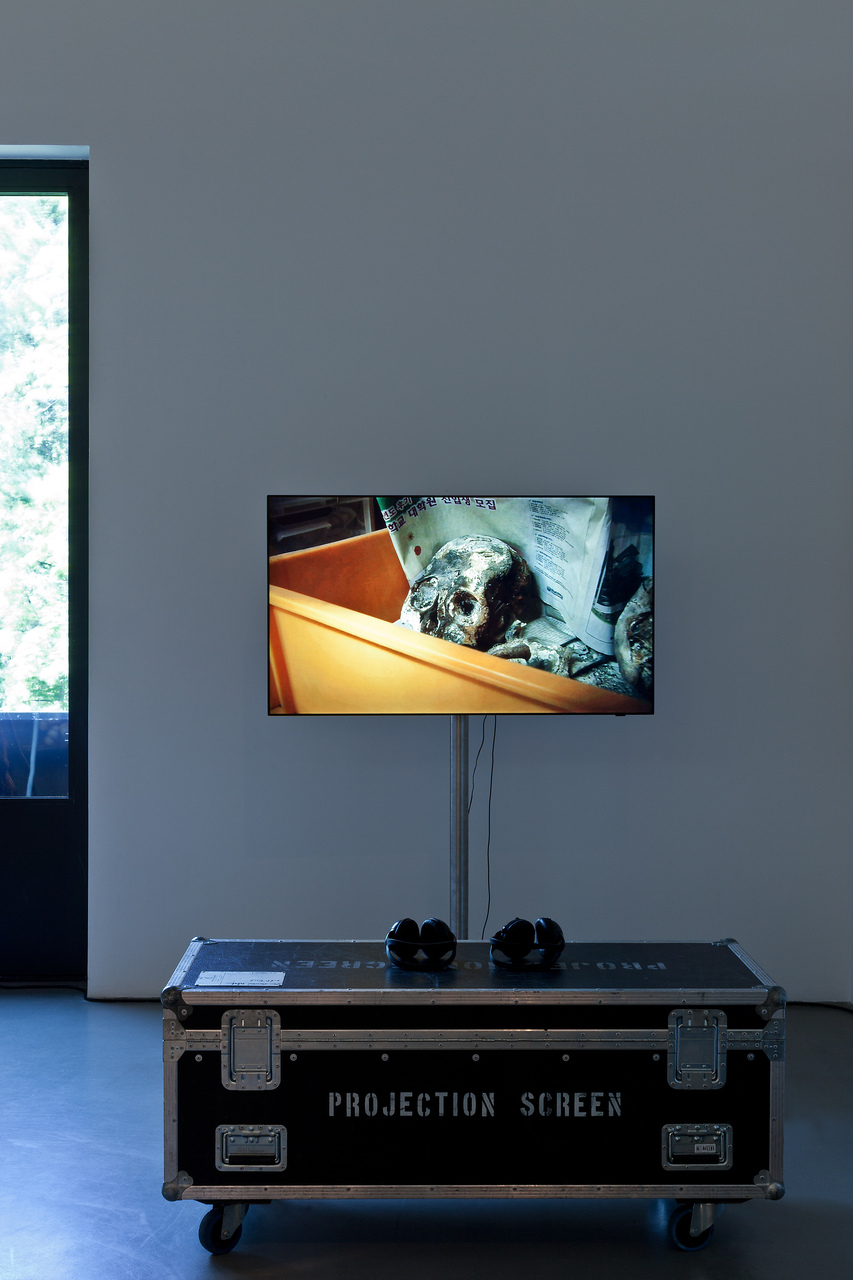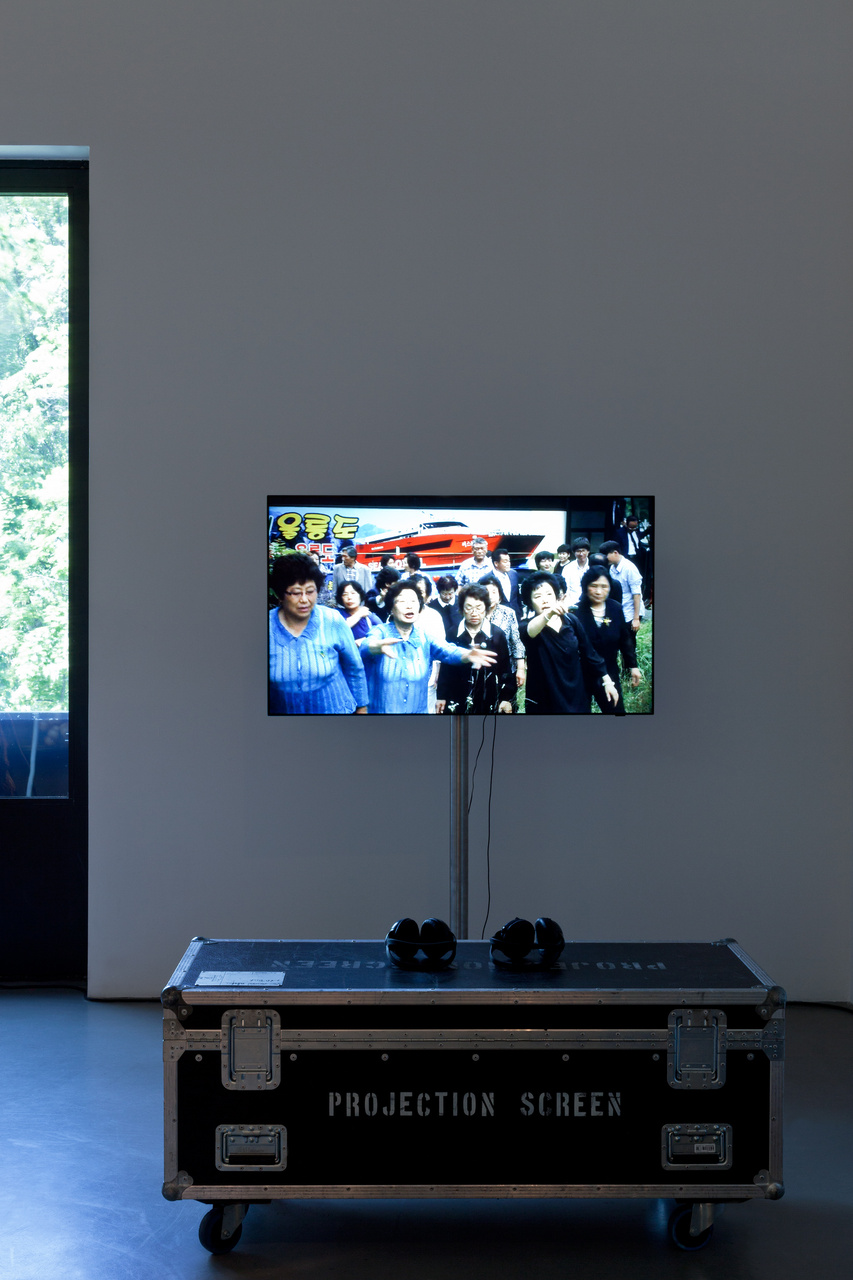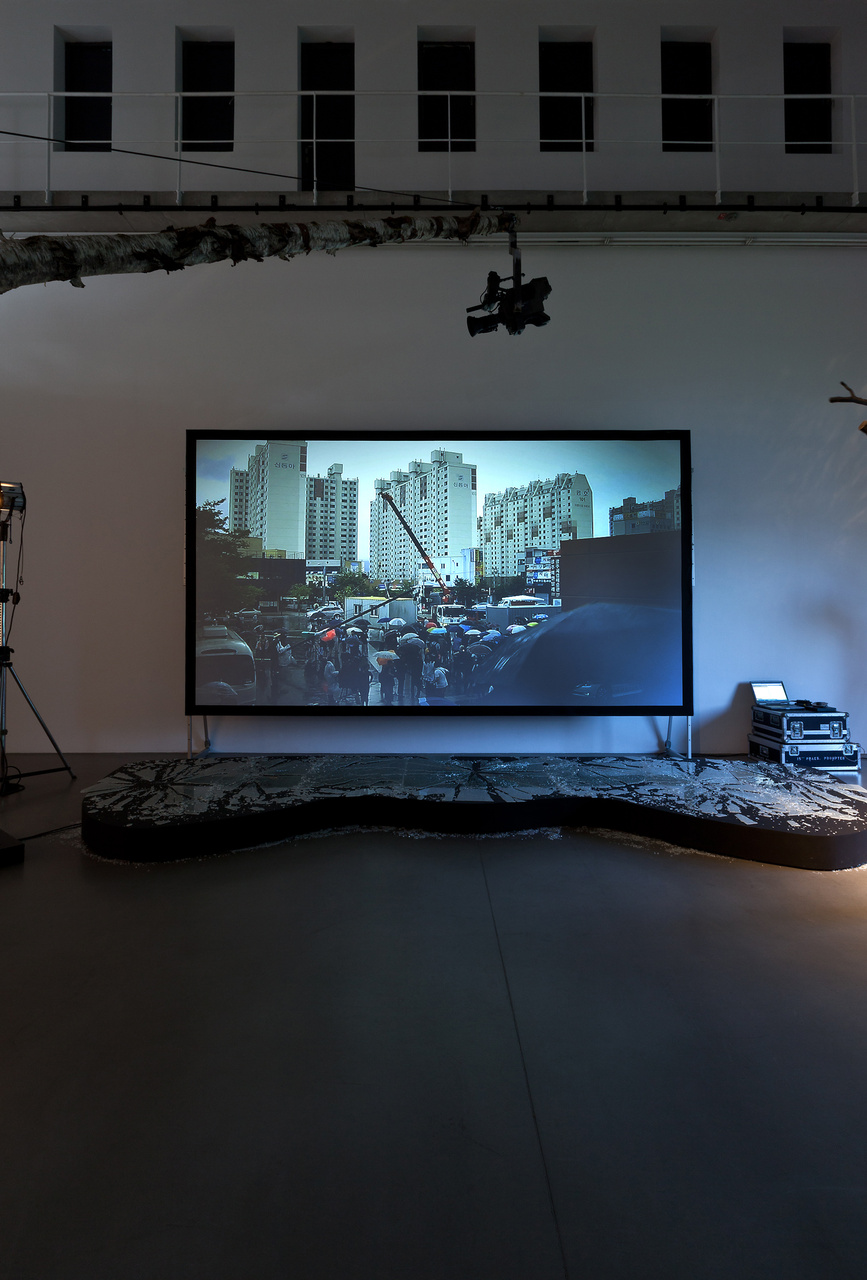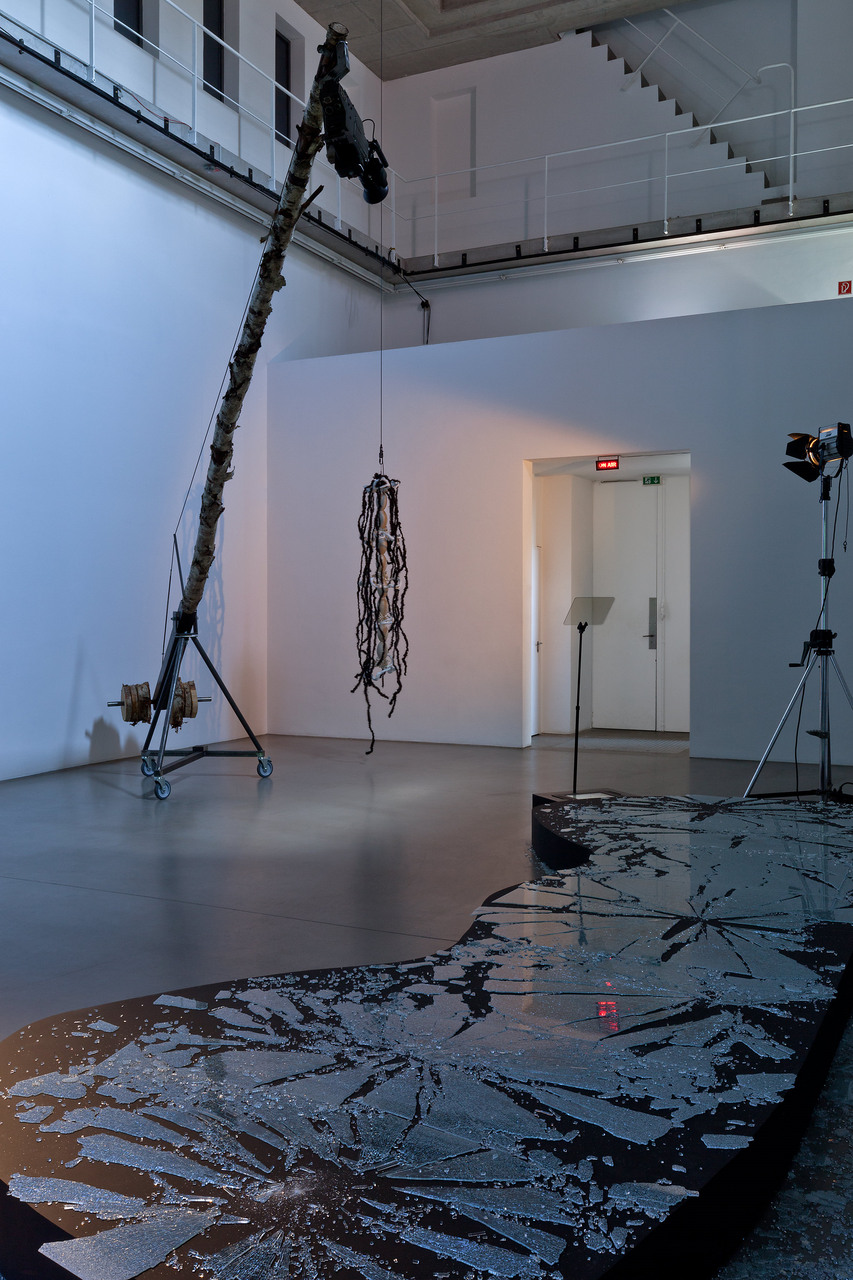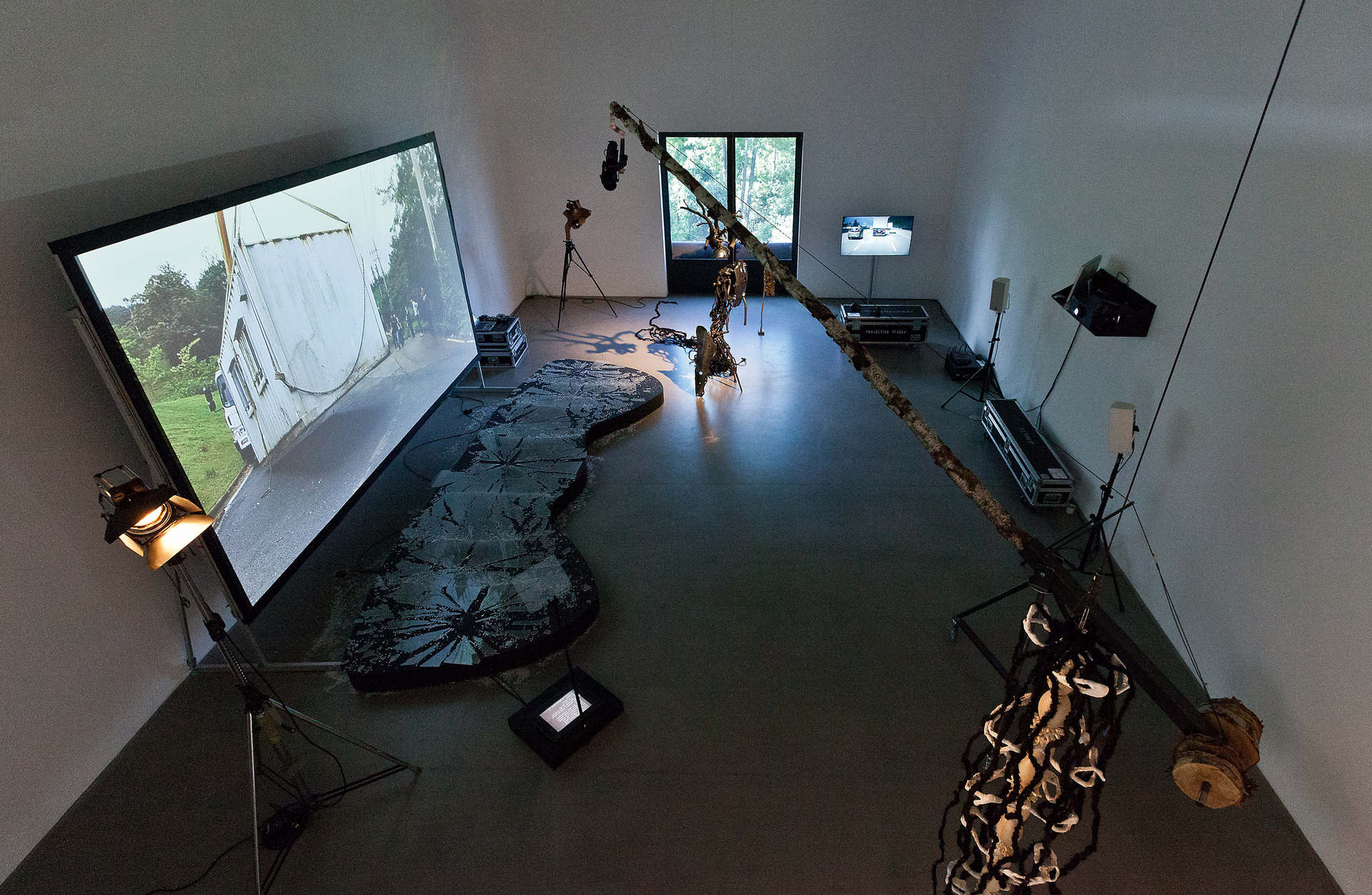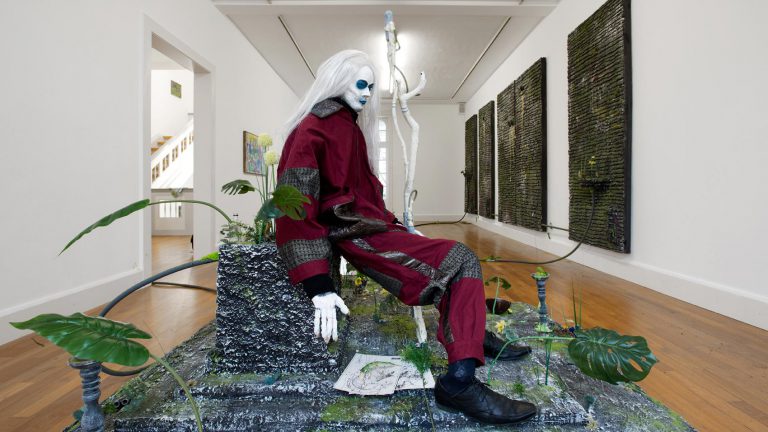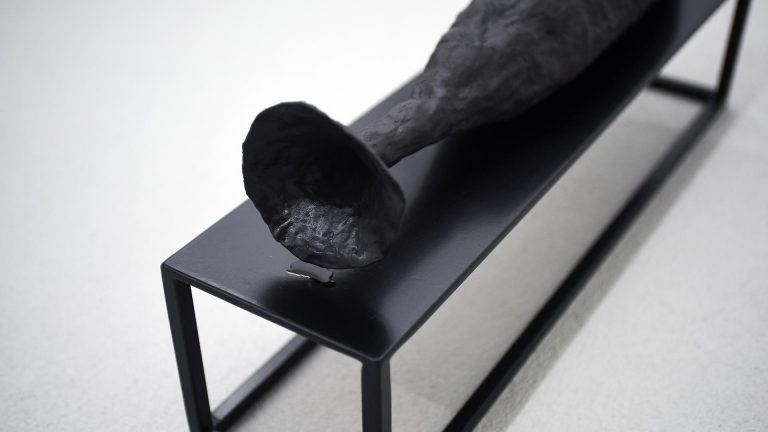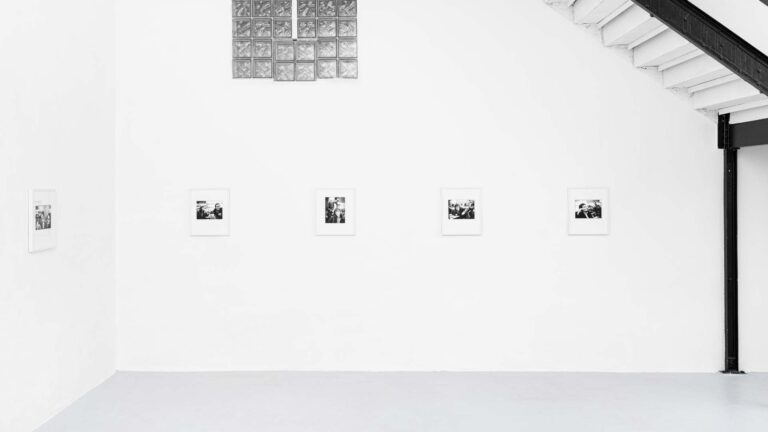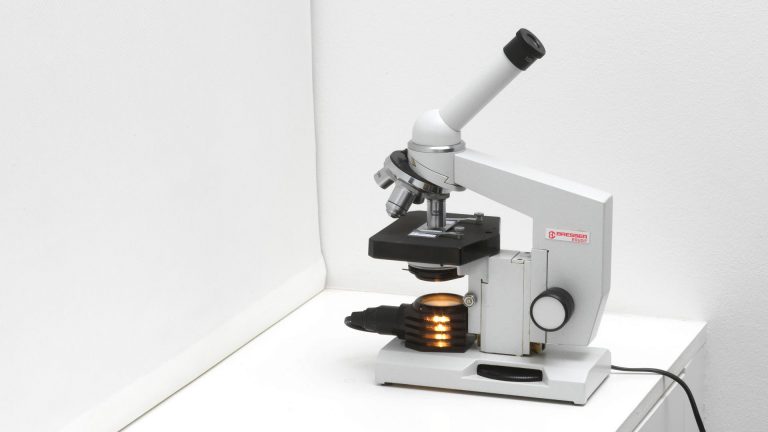Artist: Minouk Lim
Exhibition title: United Paradox
Venue: Portikus, Frankfurt, Germany
Date: May 14 – July 5, 2015
Photography: Helena Schlichting, images courtesy of the artist and Portikus, Frankfurt
When war broke out in Korea in 1950, the South Korean government committed a series of massacres against the civilian population. Ordered by the leader of the South Korean government, Syngman Rhee, the mass murders were intended to annihilate those who were suspected of supporting the North or been accused of being traitors that had helped the Korean People’s Army. Even today, little is known about how and why these people died. Thirty years later, on May 18, 1980, people in Gwangju took to the streets to defend their country’s fledgling democracy. The newly installed military regime under Doohwan Chun slanderously portrayed the protesters as communists and commanded a massacre. Again, hundreds of people were killed and thousands wounded.
The work of South Korean artist Minouk Lim (b. 1968) explores these turning points in Korean political history: events that many prefer to forget and certainly do not wish to dwell on. Lim draws on historical and political reality to develop works including installations, sculptures, videos, and performance pieces that deal with South Korea and its capital, Seoul. The artist has devised a visual language designed to put the rapid growth and development that have remade the country’s face over the past decade on hold in order to initiate a process for which the German language has the peculiar word Vergangenheitsbewältigung: an effort to come to terms with the past.
The exhibition United Paradox is centered around Minouk Lim’s most recent work Navigation ID (2014), which addresses the abovementioned massacres and seeks to involve the victims’ surviving family members. An intervention and performance piece, Navigation ID was part of the 10th Gwangju Biennale Burning Down the House in 2014. On the day of the Biennale’s press opening, two freight containers were brought into the city from the other side of the country and set down on the Biennale square. They contained the bones of people who had died in the massacres of the 1950s; their families had painstakingly located and collected their mortal remains. The trucks carrying the containers were chaperoned by a bus with relatives and an ambulance; footage of the convoy’s “funeral march” shot from a helicopter and camera teams on the ground was broadcast live on a South Korean online news website. Portikus now presents the premiere of a video piece based on the performance projected on a large-scale screen. To emphasize the need for more reporting about the events after decades of virtual silence, the exhibition design is an abstract rendering of the setup of a television studio, complemented by sculptures and installation pieces.
In one of the corners of the exhibition space Lim presents Hole in Chest Nation – Bell Pounder (1949-), which is a group of unfinished canes made by Eui Jin Chai. Chai miraculously survived a massacre that took place on December 24, 1949, when he was left for dead under the corpses of his older brother and younger cousin. After the incident, he devoted his entire life to bringing the truth of the massacres to light. For the past three decades, he has been making sculpture in response to ‘a bitter struggle against a life tainted with sorrow, anger, solitude, and curse’, using the branches and roots of trees that he has collected. Alongside these works, Lim shows her Wearable Sculptures, a series of objects that take as their inspiration Chai’s unfinished canes. Recalling human organs, the sculptures function as ironic intermediary objects that point to the unsayable. Haptic and movable, they encourage interaction between the artist’s work and the viewer.
From X to A is video work in two parts shown on a screen. One of the two videos shows the journey made by the Mothers’ House of May – a self organized group of survivors that lost their children during the massacre – to the excavation sites of civilian massacres in Hampyung, Jinju and Gyeongsan. The other part shows the recorded footage of Navigation ID, which was recorded live at the opening of the biennale. The two “channels” constitute a record of a performance where two communities meet and overcome exclusivity. In the work, the sons and daughters who lost their parents during the Korean War and the parents who lost their children in the May 18 Democratic Uprising share
their experiences. By bringing together members of different communities, the artist attempts to bridge the regional and national divisions that often characterize Korean society and is able to draw a new perspective on the idea of community through this journey of hospitality. Minouk Lim explores the role of hospitality as a form of solidarity between the families of the victims of the civilian massacres and the communities involved in the May 18 Democratic Uprising. At the same time, she reflects on a shared experience and sense of community brought about by the memory of these events.
In addressing a dark period in her own country’s past, Minouk Lim’s exhibition at Portikus reminds us that we refuse to face up to our history at our own peril. Germans know this only too well; we still struggle but have learned to examine and discuss our past publicly. Lim turns our attention to South Korea and a sensitive issue that the country’s swift rise to prosperity tends to obscure. The title succinctly expresses the contradiction at the heart of any community—a group of individuals who live together for a variety of reasons, not all voluntarily chosen, and share a past of suffering. United Paradox is an exhibition, a broadcasting studio as well as a starting point of a discussion on community building. Here, it presents a community united by an emotion of sorrow, expressed as the abstract feeling of a ‘hole in one’s chest’.
Navigation ID is produced in collaboration with Dr. Sung Hoon Han, a professor at the Institute for Social Development Studies at Yonsei University, who previously worked on the Korean Truth and Reconciliation Commission. Additional help in realizing the work came from the families of the victims in a number of local provinces, the Mothers’ House of the May, and the Gwangju Trauma Center.
On the day of the opening, Minouk Lim will perform FireCliff 5 in cooperation with Doctor Sung Hoon Han, a new performance as part of the FireCliff series (2010-present). Presented as a ‘performance documentary theater,’ the series delves into the artist’s continuing effort in grasping the sense of orientation within a society where the unforgettable is forgotten against the will of the many. FireCliff 5, a new rendition of the series in response to the exhibition at Portikus, appropriates the exhibition as a stage of the performance and reflects on the historical background of Minouk Lim’s work.
United Paradox, Minouk Lim’s first institutional solo exhibition in Europe, is produced in collaboration with Kunsthalle Wien, Vienna, where her work will be on view in the late fall 2015 as part of the group show Political Populism.
Navigation ID, 2015
From X to A, 2014


